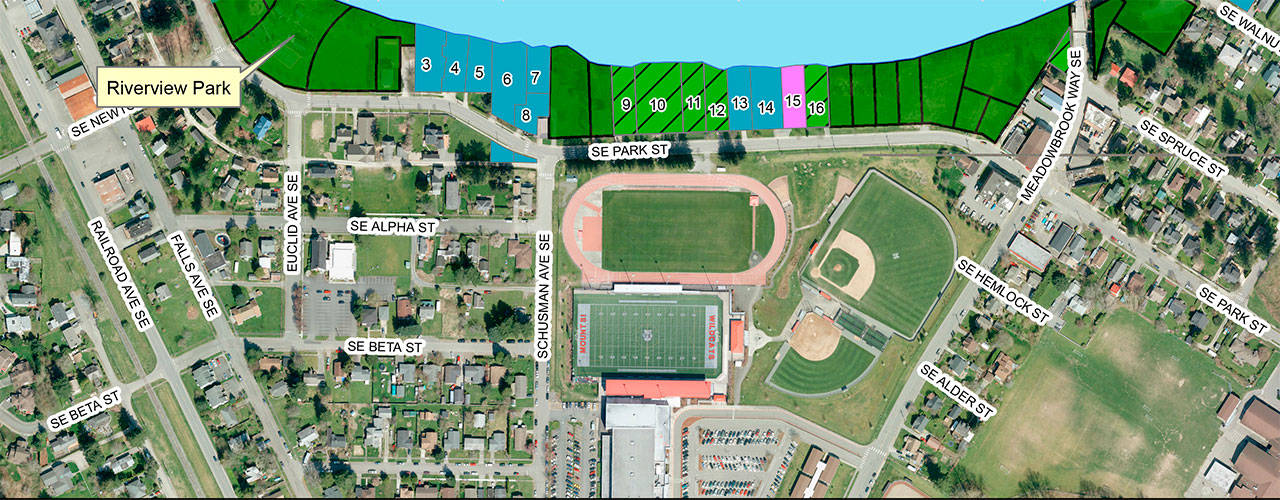The city of Snoqualmie is one step closer to purchasing property in the Riverfront Reach area in downtown, along the Snoqualmie River on Southeast Park Street, after the approval of another phase of Conservation Futures Tax Levy grant funds at the March 26 council meeting.
The Snoqualmie City Council unanimously approved an amendment to the Conservation Futures Interlocal Agreement between the city and King County, which allocated $450,000 of additional funds for the city to use to purchase property along the river.
The city is acquiring property in the Riverfront Reach area to reduce flood impacts and provide open space opportunities in the city. The use of the properties will also overlap with the city’s Riverwalk project. The city has received funding through the Conservation Futures Tax Levy annually since 2012, which is specifically awarded for the purpose of permanent protection of open space land.
In order to receive the grant, the city must have a 50 percent match. At the meeting, Associate Planner Nicole Sanders explained that the match was met using additional grants, not existing city funds.
“The match is paid for by grants, by past expenditures that originated from grants, and our agreement with the flood control district, which provides partial funding,” she said. “So we have $1.2 million in match from all those combined sources, we would only need roughly $600,000 to match both this amendment as well as past unexpended CFT funds. We have more than double the match we need from non-city funds.”
Council members James Mayhew and Scott Sundwall said they had received questions from citizens wondering if the funds could be used to purchase other properties inland from the river. Sanders reassured them that the funds were only to be used for purchases along the river.
In addressing council member Peggy Shepard’s question regarding how long it would take to purchase all of the properties in the Riverfront Reach area, Sanders expected that within the next five years the city “will have a pretty good handle on all those who wish to sell.”
Shepard continue on to ask it if would be possible to rent out the houses once purchased instead of demolishing them. Sanders explained that the funding sources required the city to remove the houses from the property they acquire. The city can, she said, transition the houses toward non-residential use, because the funding can be used to provide open space services or remove homes from the floodway.
“I have in the past explored the option of trying to auction off the properties at a very low rate to a person that is very interested who could then physically move the home off of the property, that has not been successful in the past. One of the houses I’m looking at in the near future I think could be another viable candidate so I will probably look into that as well,” she said. “When we do pursue demolition, we pursue also a very aggressive recycling strategy. We see some mitigation of those negative impacts but unfortunately retaining the housing on those properties themselves is not something we can continue.”
Council member Bob Jeans questioned the overlap or connection between this project and the Riverwalk project. Sanders responded that the two projects are independent, but do have mutual benefits in creating open space and improving environmental conditions along the river.
“The acquisitions along the Riverwalk themselves are independently beneficial for two reasons,” she said. “One is creating open space or environmentally improved conditions along the river, which will help in-stream conditions both locally and downstream, as well as removing houses along the river, which are subject to the fastest moving flood waters during flood events. So acquiring these homes along the river is independently beneficial, but it is intertwined with the Riverwalk projects phases.”



